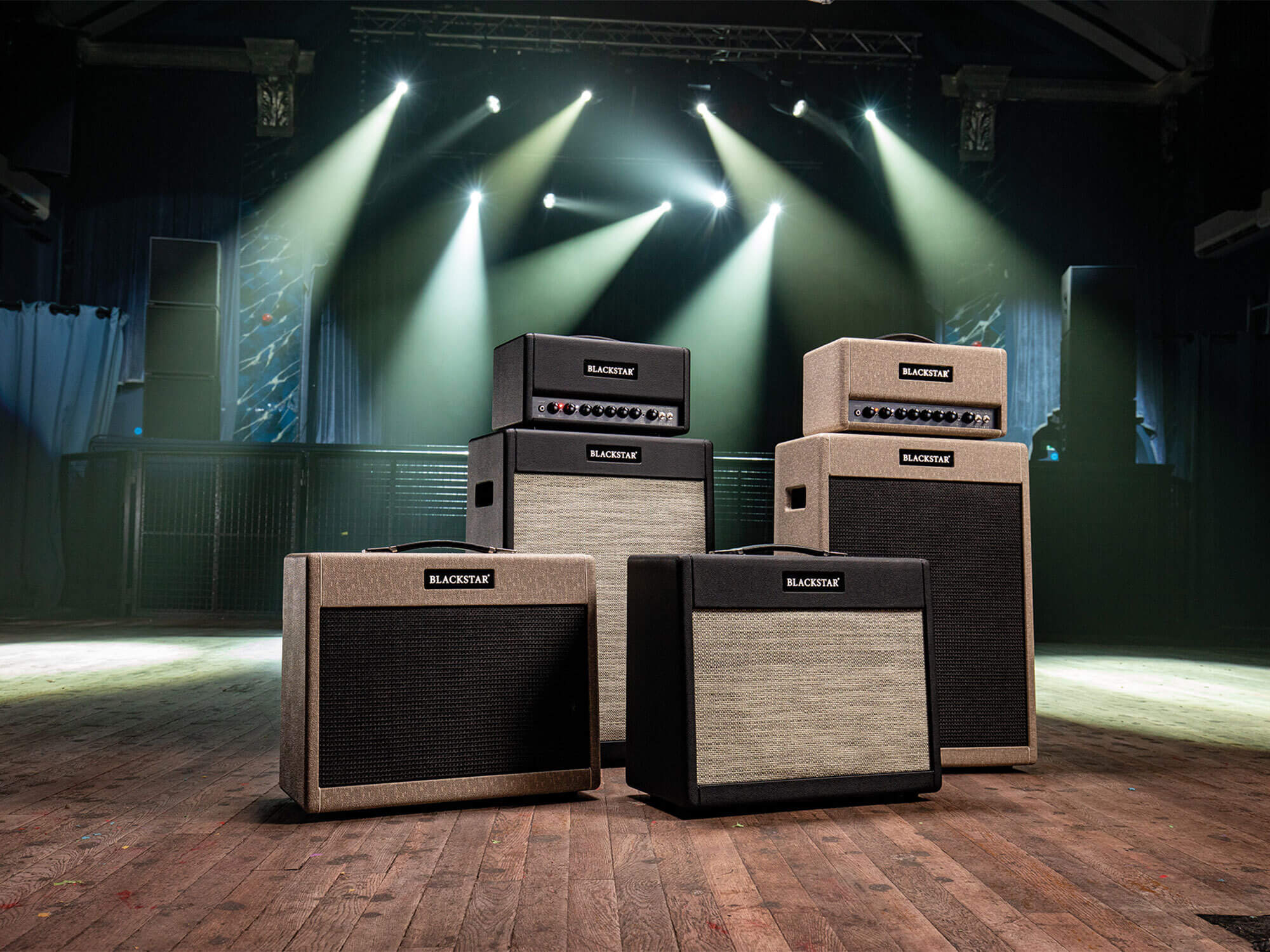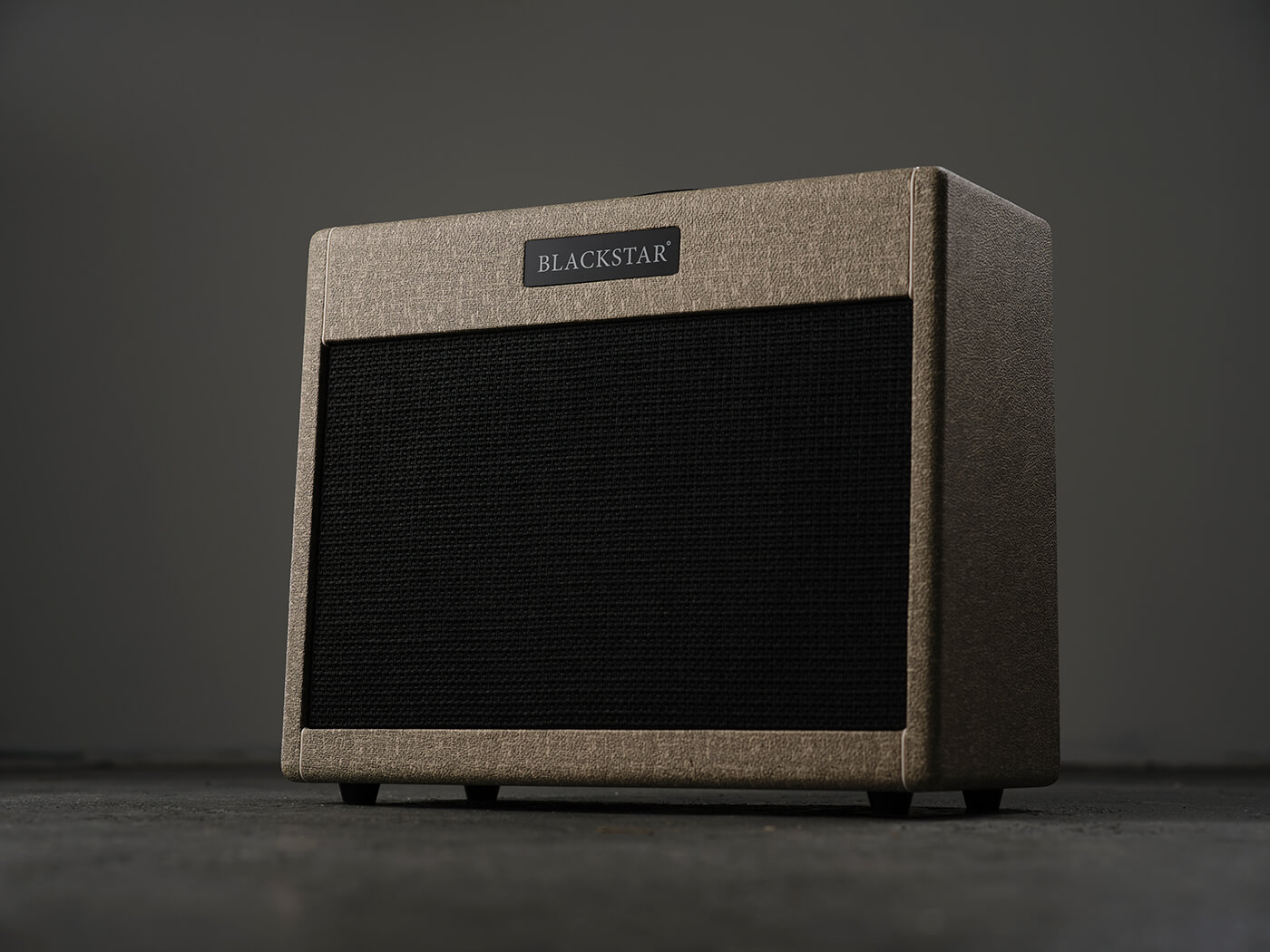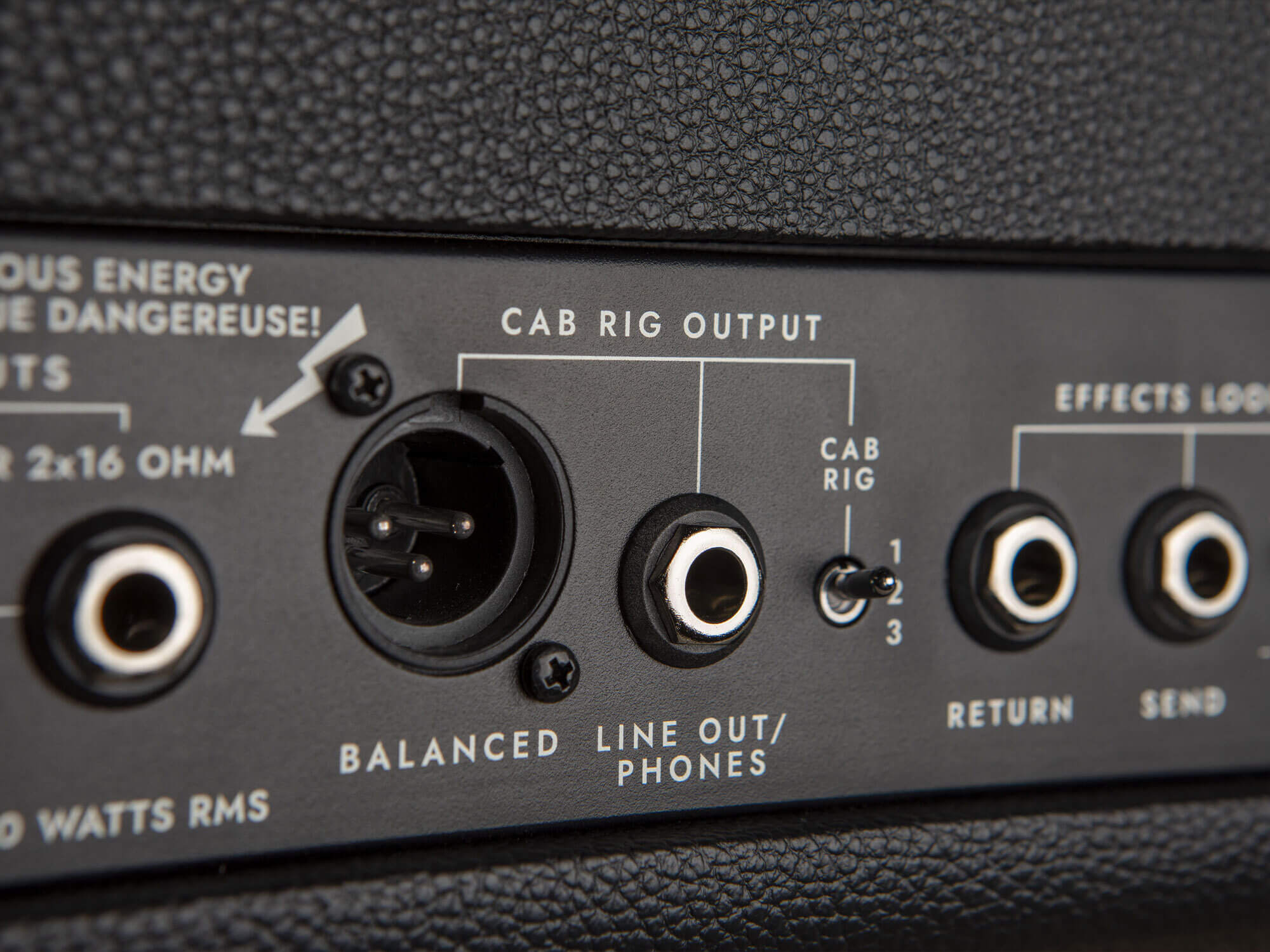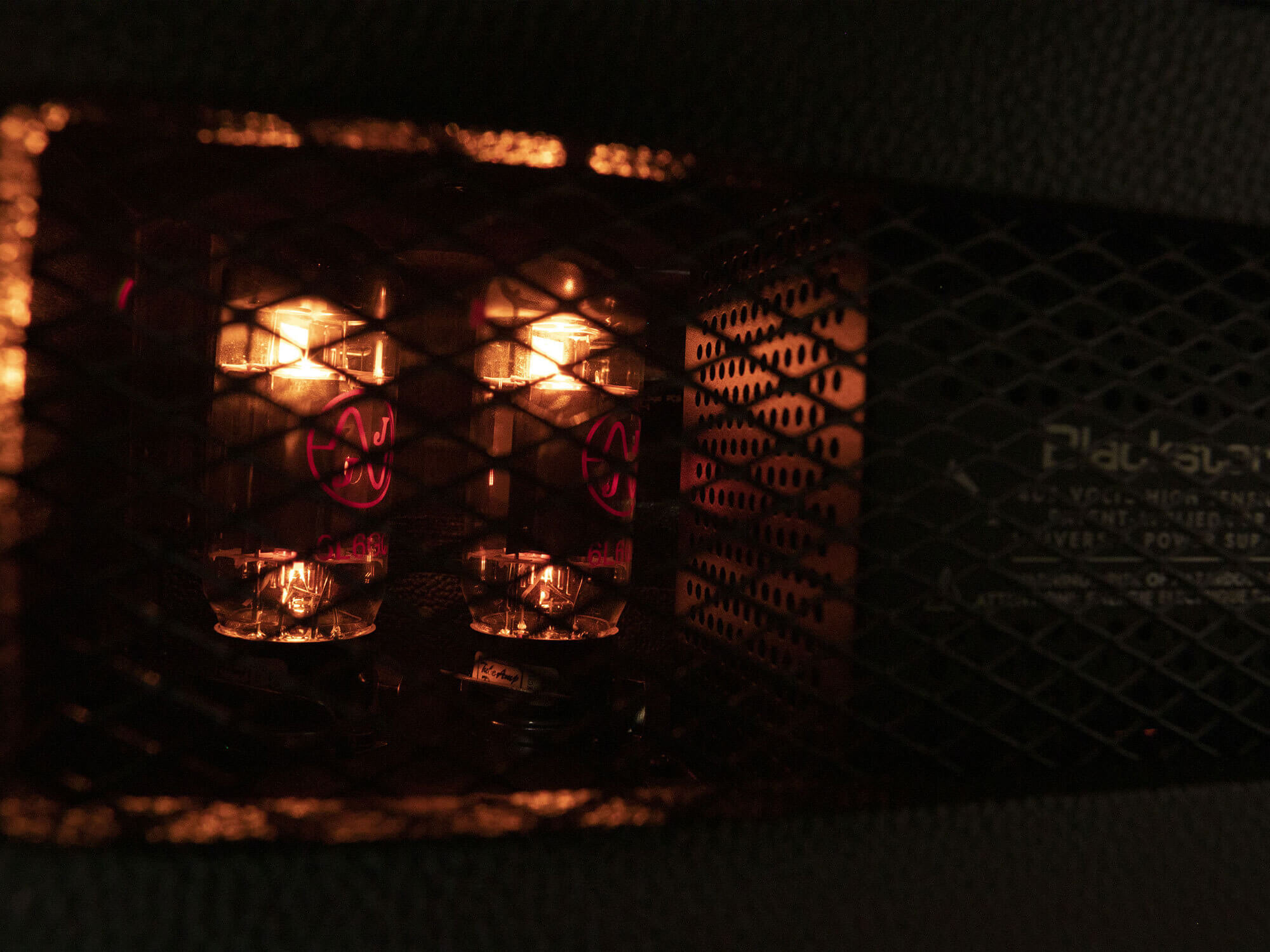Related Tags
How Blackstar ditched the mains transformer to make the St James series the lightest 50-watt valve amps ever
Amplifier wizard Paul Stevens tells the tale of the R&D behind the newest and most futuristic valve amps on the block.

All images: Blackstar
Blackstar’s new St James amps have been a long time coming. “We didn’t put this together and have it work, satisfactorily, the first time,” Paul Stevens, Blackstar’s chief engineer tells us. “It was a couple of years of development before we put it out – and at least a year before we were even vaguely happy with it.”
The reason? The amps pack in an impressive smorgasbord of new tech, all while being incredibly lightweight, and remaining bona-fide valve amplifiers through-and-through. Pulling this off, and making the amp still sound excellent, makes a great case for the valve against the tempting pull of digital all-in-one solutions.
Blackstar’s marketing for the St James amps has zeroed in on the weight issue – but ultimately, this is indicative of something bigger: pure convenience. Valve amps face tough competition from small, pedal-sized units that can be slung in a gig bag and plugged into virtually any PA for live use, or straight into an interface if you need to make a quick TikTok or Instagram video. And right now they sound better than ever.
It’s an issue of which Paul is acutely aware: “I’m a player myself, I’ve played valve amps for 40 years, apart from designing them [Paul’s long CV includes the likes of Peavey, Trace Elliot, Cornford and many more], and I too like the fact that they sound good. But I’m annoyed by the weight. And more and more you see products that sound good and lighter – but they’re not valve. It gets harder and harder to justify sticking with valves when you see all of these other groovy new products that are easier to move around, and sound almost as good. So that’s what people have been asking for for a while now – they like the sound but they want the weight reduced.”
And so, the brand was off to the races. The goal was simple, at first: make a tube amp that doesn’t weigh a ton, but doesn’t compromise on sound.

Unlimited power
The single heaviest component of a valve amplifier is the mains transformer, responsible for taking in AC wall voltage and doling it out to the various parts of the amp. A traditional linear transformer is an uncomplicated thing, but heavy: a big block of iron, wrapped in thick wire, tapped off at different points as needed. So when Blackstar set out to create a lightweight valve amplifier, this was the first thing to go. In its place would be a Switching Mode Power Supply, or SMPS: these are found across countless devices such as phone chargers, PC power supplies and so on, but it wasn’t just a case of throwing one into a prototype and calling it a day.
“A valve amp has many different supplies. Apart from the basic high-voltage, there’s another low-voltage for the heaters, there’s other low-voltage supplies for any other support circuitry like the DSP chips or the op-amps, and an extra supply for the bias – it’s quite a complicated thing,” Paul says. “The SMPS in laptops or phone chargers are normally quite simple – just one voltage. You can get those things off the shelf and it’s easy. Whereas this was quite a feat of engineering to get it to actually work.”
While you’re unlikely to blow an SMPS under normal circumstances, guitar amps are being driven hard. The St James’ supply “needed to be able to withstand all the endurance and heat testing, as we didn’t want an amp that would shut down after an hour of playing. We were testing these things for 24 hours flat.”
SMPS are much lighter than transformers, but come with a lot of surrounding circuitry – a series of diode rectifiers, mosfets and filter capacitors are working to turn AC voltage into what the amp needs. It’s therefore unsurprising that initial prototypes “had loads of problems with noise going on. We had to change the way the grounding was done, all sorts of things – it was quite an engineering challenge to get performing quietly and reliably.”

The right technology for the right job
The mains transformer was just one piece of the puzzle. The audio output transformer remains, but is “much smaller than you might expect in a 50-watt amp, as we could adjust and compensate in other parts of the circuit. So while we wanted it to be light, we didn’t want it to be: ‘Yeah, feel the weight, but keep that in mind when you listen to it…’
The woodwork for the amps and cabinets uses candlenut, a light but fairly strong wood occasionally used for guitar bodies. As to its acoustic properties, any unwanted sonic results of using such a light wood were ironed out holistically: “Using candlenut wood, like everything, does have an effect,” Paul explains. “Everything is going to affect the sound to a lesser or greater degree. But we can design out any detriments with other methods. Again, it all comes down to the listening.”
The world of guitar equipment does have a rather odd relationship with wood choices, as it does with a lot of components with quote-unquote ‘mojo.’ Often the formula is something along the lines of: the harder to use or find, the better it is. The five-kilogram all-mahogany Les Paul. The mythical diodes. Tubes themselves, to an extent. But Paul explains that Blackstar doesn’t really pay much heed to these attitudes: “However you get there is not important in the end, the resultant sound is the important thing,” he says.
Similarly, Paul notes that Blackstar’s amps are occasionally criticised by a small set of purists for using op-amps to bolster valve circuitry. “People claim it’s not truly ‘all valve.’ We’re happy to call an amp a valve amp if it’s got valves in the preamp producing the overdrive, and valves in the power amp. If we happen to use op-amps between things, for buffering, for shaping EQ, for lowering the impedance to manage the noise – it’s all good stuff! People lust over the thought of having a Klon Centaur in their chain… well, what do you think is in there? A bunch of op-amps!
“We use the right technology for the right job, basically, to get the sound we want. And that comes down to the time we spend prototyping, and listening, and going round in circles doing that. It’s worth it in the end, as the amp comes out and you’re really happy with it – it’s the same as doing a song mix, you know, you can go round in circles, mixing this way, that way, ‘go back to the one we had the week before…’ Eventually, you have to draw a line or you’ll never put anything out.”
In terms of the “right technology for the right job,” you might have been surprised by the St James series’ use of ferrite-magnet speakers rather than neodymium, which has long-been the de-facto weight-saving choice for guitar amplifiers. “We had a meeting with Celestion and explained what we were doing, and we did talk about using neodymium,” Paul says. However, he also noted that neodymium’s status as the go-to weight saver meant the development of weight-saving for ferrite magnets wasn’t pushed forward. “So we asked if there is anything we can do with ferrites to make them lightweight. Celestion looked into it, for anywhere that weight could be lost – the way you would do with a racecar. They were surprised at how they were able to redesign the geometry of the magnetic structure, and lose a lot of weight.”
“It was the same as the output transformer, where we were decreasing the weight and compensating in other places – this isn’t hi-fi, this is a guitar amplifier, and having them run a certain way can definitely be beneficial.”
Valve troubles
A mention of hi-fi reminds us of the wider status of the world of valves: the supply chain has been impacted hard by Russia’s invasion of Ukraine, with some major valve factories impacted by sanctions. The situation has led US hi-fi brand Western Electric to begin to bring tube production back to US soil, for the first time in decades. But even before the invasion and subsequent sanctions, the chain wasn’t particularly stable, with factory lead times backed up by a number of closures.
But for the St James amps specifically, the outlook is a little brighter, “mainly because the tubes in the St James amps are some of the most common ones.” These are the tubes that are still easy to find, and likely aren’t going anywhere anytime soon – regardless of any western manufacturers taking up the mantle.
But, Paul is aware of the bigger picture. “There is a bit of a worry, I mean, when I came into this side of the industry it was the end of the Cold War – a lot of the valve companies had been shut down. It looked really ropey, like we could have a situation where guitar amps using valves were going to be a thing of the past, but then suddenly, we had SovTek making stuff that was good, And it all got better again. And then obviously the Chinese ones got better. So other than just what’s going on in Ukraine, it is almost like going back to that Cold War period. There is a bit of uncertainty.”
And this uncertainty is another reason for Blackstar to only “put valves in circuits where they’re best used – and not just for the sake of it.
“People can complain if you use an op-amp in place of what could be a valve – but op-amps are more versatile in a lot of ways, so we use the valves for what they’re best at: all the overdrive, all the warmth and so on. And because we’re a fairly young company, without the stigma of our past products, we don’t feel the need to make them ‘all’ valve – it just adds a lot of size and cost.
“And if supply does become a bit of a problem, you just can’t make as many amps. We make amps in the thousands – if we had, two or three times the valves in there just for the sake of saying it’s ‘all’ valve, then we would be able to make a half or a third of the amount of amps at time.”

The sound of silence
Integrating Blackstar’s latest digital cabinet simulation, CabRig, into the St James is the other side of the convenience coin. A valve amp that weighs nothing is moot if it doesn’t meet 2022’s standards for lower stage volumes and higher connectivity. Early versions of the St James were set to have the same analogue cab-sim technology as earlier Blackstar amps, however, as luck would have it, the digital side of Blackstar’s design team informed Paul of their work on CabRig – a perfect match for the convenient, modern update to the valve amp.
Notably, the sound achieved in the CabRig software can be done so silently, but still using the entire amp – power amp, audio transformer and all. Normally, this requires something like a Universal Audio Ox-Box or a Two Notes Torpedo Captor: a piece of circuitry that places a load on the amplifier’s output, so that it doesn’t try to meet infinite impedance and blow up in the process.
These, depending on their power rating, can be hefty – but Blackstar’s solution to loading the amp without adding weight was simple, as Paul explains: “Here, we’ve got a 50-watt switch which goes down to two watts. And so if you’re using the amp without a speaker plugged in, it automatically takes it down to two watts, and then loads that – so the whole power section is still being used when you record. But as it’s only two watts, the reactive load can be a lot smaller in size and weight.
“If you do have a speaker plugged in, that’ll be loading the amplifier, even when you’re using the CabRig software. Either way – it’s always safe, and the whole circuit, preamp, power amp, output transformer, is being used to get your sound.”
This is part of the reason Paul is genuinely excited when he talks about switching over to use the St James amps. “I hate to use the phrase one-size-fits all, it’s a pretty cheesy comment, but for me this is actually the first time I can use one amp for all the different playing scenarios – in rehearsal, with in-ears, all of it. I just go to the gig now and the engineer plugs in an XLR – and that’s it! But you can grab hold of the knobs and turn them, you don’t have to go into any menus.”

Trend setting
So, does Paul expect to see other brands follow suit in St James’ approach to self-loading, lightweight valve amps? “Probably, to be honest. If the St James is considered a success, I think we’re probably going to see SMPS being used more as well. It’s like anything else – we don’t yearn for old heavy phones, our own heavy laptops – we laugh about the bricks people used to carry around in the 1980s. Personally, I’m not going to go back to moving my big heavy stereo rig around! It’s gonna be on eBay or down at the Cash Converters. I think a lot of people are going to look at these and go, ‘well, we don’t want the heavy stuff now.’ And then naturally the rest of the market will catch up.”
As for the future of the St James series itself, eagle-eyed early-adopters might already have seen a clue. “I can tell you that there has already been a slip-up,” Paul says. “We’ve released two heads, two cabs and two combos. Now. In the manual, which I wrote, I was trying to future-proof it. And I happened to mention a couple of other products. And that manual is online on the website now. So yes, there are two more products on the way.”
These happen to be a pair of 2×12 combos – a 6L6 and El34 pair, as with the 1×12 combos and the heads. “I think it’s on the first page, where it says ‘Thank you for buying this Blackstar product’, and so on, this manual covers the following…’ And I looked at it earlier, because I wanted to reference something, and thought, ‘Oh, shit!’ It’s out now, anyways!”
Find out more – and download the offending manual – over at blackstaramps.com.
